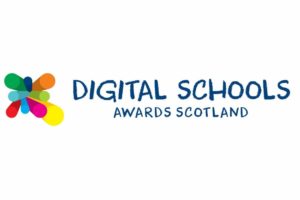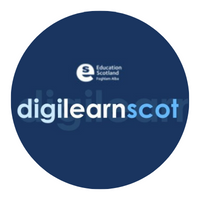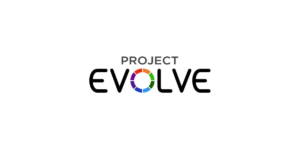When your school is looking to move forward in its digital learning journey, where do you start?
You may be reflecting on where you are, where you want to be, and what needs done to move further along the road in embedding digital technology across the school, at all stages and across the curriculum to make a positive difference to learning and teaching – and every school will be different.
The signposts below to the resources you may find useful, whatever your starting point, will help you gauge where your school is right now, help your school define a vision, map out the steps to take to move forward, identify the strengths, experiences and roles of everyone in your school community, set markers to track your journey, and celebrate the successes.
So how do you gauge where your school is now in its digital learning journey?

Aiming to achieve an award when you might think you’re only beginning a journey might seem an odd place to start, but the Scottish Digital Schools Award is a framework which helps guide you into reflecting on your starting point right now, and then guiding you towards next steps for your school across a range of aspects of looking to have a school with digital firmly embedded in practice and making a difference in learning and teaching.
Going for the award accreditation itself (the validation step) may be some time away, but a helpful first step for any school moving forward on their digital learning journey is to register for the Scottish Digital Schools Award and then undertake the self-evaluation. This prompts you to look at where your school sits in relation to five digital schools criteria.
The five Scottish Digital Schools Award criteria encompass:
- Leadership and Vision (which includes digital learning strategy, school readiness, Acceptable Usage Policy, Digital Technology Plan, online presence, achievements and effective use of any tools, practices or initiatives);
- Digital Technology Integration in the CurriculumI (understanding of how digital technology can be used to improve learning across the curriculum at all stages)
- School Digital Technology Culture (awareness around how digital technology affects the quality of learning and teaching, pupil attitudes and behaviour, and the school community)
- Continuing Professional Development (ongoing professional development and support for staff in the use of digital technology to support learning and teaching)
- Resources and Infrastrcutre (reviewing the available digital technology resources, including hardware, software, infrastructure and plans for development to support learning and teaching)
Your school’s responses can be updated at any time – so going ahead and registering and starting this process is a helpful guide to ascertaining where your school is placed right now, and provides prompts for areas which may yet to be considered in your school planning for the development of digital learning. And only when your school feels the school meets the programme criteria through completion of the self-evaluation, and uploading supporting documentation, does the validation visit get requested. A successful validation visit then leads to the Digital Schools Award accreditation. The journey never stops of course – and even with accreditation the self-review framework can be useful to continue to move the school forward in developing the use of digital technology to support learning and teaching.

To hear from a validator from the Digital Schools Award programme, as well as school and Early Learning and Childcare setting leaders, about how the Scottish Digital Schools Award framework can help transform and embed digital across the curriculum, then watch the videos on Education Scotland’s DigiLearnScot site.
What would help guide our school’s digital learning journey?
There are many frameworks, toolkits and guides which will help guide school leaders in planning the digital learning journey of their school.
Microsoft Education Transformation Framework provides a free-to-access detailed toolkit, a scaffold to frame elements of what you decide, through using this framework, needs done in your school. This details the four interconnected pillars: Leadership & Policy; Teaching and Learning; Intelligent Environments (which encompasses the online environments your school uses, and leveraging data analytics for making the most impact on learning and teaching, as well as sustainable processes); and Student & School Success (anchored in equity and inclusion, building capacity through professional learning and development for all to ensure learners develop their social and emotional skills and are successfully prepared for the future).
You can of course adapt this framework to your specific needs. It provides a scaffold from which you build your school’s bespoke digital learning goals, and provides a structure to guide you, examples of school stories as well as research studies.
Mark Sparvell shared a tweet about an adaptation of the Education Transformation Framework specifically looking at schools on their 1:1 journey, as this applies to the journey of all of our Falkirk schools you may find elements of that particularly useful.
 Leadership in the Modern Workplace is a sequence of 5 short connected free-to-access on-demand online courses in the Microsoft Educator Centre which directly correlates with the Microsoft Education Transformation Framework and provides a structured way for school leaders to get to grips with each element through guided discovery and reflection on the presented resources. And, being part of the Microsoft Educator Centre, when you complete each of the free online courses you achieve micro-accreditations or badges. This learning path will provide you with ways to implement digital tools effectively and demonstrate real-world use cases to help transform the school environment.
Leadership in the Modern Workplace is a sequence of 5 short connected free-to-access on-demand online courses in the Microsoft Educator Centre which directly correlates with the Microsoft Education Transformation Framework and provides a structured way for school leaders to get to grips with each element through guided discovery and reflection on the presented resources. And, being part of the Microsoft Educator Centre, when you complete each of the free online courses you achieve micro-accreditations or badges. This learning path will provide you with ways to implement digital tools effectively and demonstrate real-world use cases to help transform the school environment.
 Leadership & Policy Education Transformation Framework is a free on-demand online course within the Microsoft Educator Community which provides a guide way for school leaders to reflect on the Microsoft Education Transformation Framework before looking at how to implement that in their school. It helps school leaders to develop a school-driven vision that represents the aspirations of learners, educators, and the community, create strategic implementation plans identifying strategies and tactics to support stakeholder groups through the transition; and build a positive system culture embracing change through a growth mindset, and devise a plan for community partners and school stakeholders to work together on a common goal.
Leadership & Policy Education Transformation Framework is a free on-demand online course within the Microsoft Educator Community which provides a guide way for school leaders to reflect on the Microsoft Education Transformation Framework before looking at how to implement that in their school. It helps school leaders to develop a school-driven vision that represents the aspirations of learners, educators, and the community, create strategic implementation plans identifying strategies and tactics to support stakeholder groups through the transition; and build a positive system culture embracing change through a growth mindset, and devise a plan for community partners and school stakeholders to work together on a common goal.
 Leading Schools of 2030 is a free-to-access on-demand online course in the Microsoft Educator Centre which is aimed at school leaders. Its aim is to make the most of research findings into actionable change in education to benefit the learners of the future so that we can all help prepare the class of 2030 to thrive in work and in life. This course sets out to help to introduce you to the research findings about the current and future environments of education as perceived by several research studies, draw insight from these findings, and give you practical ways to apply this learning in your school.
Leading Schools of 2030 is a free-to-access on-demand online course in the Microsoft Educator Centre which is aimed at school leaders. Its aim is to make the most of research findings into actionable change in education to benefit the learners of the future so that we can all help prepare the class of 2030 to thrive in work and in life. This course sets out to help to introduce you to the research findings about the current and future environments of education as perceived by several research studies, draw insight from these findings, and give you practical ways to apply this learning in your school.
 Google for Education Driving Instructional Change in collaboration with The Learning Accelerator provides an implementation guide and supporting resources to help school leaders “understand and enact four key, research-backed learning principles for improving education:
Google for Education Driving Instructional Change in collaboration with The Learning Accelerator provides an implementation guide and supporting resources to help school leaders “understand and enact four key, research-backed learning principles for improving education:
1 – Personalized & Measurable: Adapts for each unique learner to meet them where they are.
2 – Project-based & Self-managed: Champions learners taking active ownership of their learning
3 – Collaborative & Diverse: Forms meaningful connections to spark new and different thinking
4 – Authentic & Experiential: Applies knowledge plus experience to explore and create a world beyond Googleable question”
Education Scotland produced a series of infographic images illustrating features of what you might expect to see in a digital teacher, digital learner, digital headteacher, digital Early Learning and Childcare Centre, Primary School, Secondary School, and local authority. These vision diagrams could be useful as discussion prompts in your school – perhaps to ask “so what does this look like in our school?” or to expand on what’s in the image and describe where you are now as a school, and what your school sees as the goal to aim towards.
If you are in a leadership position in your school you may find particularly helpful the Education Scotland ThingLink version of the Digital Headteacher infographic which has additional interactive elements to the image with “What does this look like” and links to related supporting resources
Creating a Digital Learning Strategy
Whether you envisage a strategy, a vision, a routemap or policy for your school, the following resources make be helpful in helping you and your school community build a shared plan for the future in how you will use digital technology to support learning and teaching.
This YouTube video by Al Kingsley, Shaping your school’s digital learning strategy, provides a quick overview of the key areas to consider, questions to ask and process for shaping a digital strategy.
The video above serves as an introduction to shaping your own school’s digital learning strategy, but of course if you are looking for a detailed guide based on the above then you can download the free Guide to Creating a Digital Strategy in Education by Mark Anderson and Al Kingsley.
Developing an Online Safety/Acceptable Use Policy
An important element of making use of digital technology across a school community is to have in place an online safety/Acceptable Use Policy. Schools which are part of Local Authorities will likely have an authority-wide Online Safety/Acceptable Use Policy to adopt and implement. However if your school is not in that situation then you may find helpful the LGfLDigiSafe online safety/AUP templates site.
And what resources might support schools in ensuring online safety, digital citizenship, and digital literacy are embedded across the whole school throughout the curriculum when using digital technology?

ProjectEVOLVE provides a framework and progression with matched activities and resources, to support anyone working with children and young people to equip them for digital life, from early years to age 18. ProjectEVOLVE takes the hundreds of statements from UK Council for Internet Safety’s (UKCIS) framework “Education for a Connected World” and marries together perspectives, research, activities, outcomes, supporting resources and professional development materials. You can find out more about ProjectEVOLVE in the support section of this Glow Blog.
.
.
360 degree Online-Safety School Review Tool – from SWGfL – and 360 degree online safety review tool for Scotland is free to use, and is intended to help schools review their Online Safety policy and practice, walking the school through each aspect of Online Safety, to collaborate, report, and progress. This online tool provides information that can influence the production or review of online safety policies and develop good practice; provides a process for identifying strengths and weaknesses; provides opportunities for commitment and involvement from the whole school; and provides a continuum for schools to discuss how they might move from a basic level provision for online safety to practice that is aspirational and innovative. Click here for the version for schools in Scotland.
What support is there for the “responsibility of all” elements of whole-school digital literacy and computational thinking?
Where can teachers look for support in embedding digital literacy and computational thinking, the “responsibility of all” in Scotland’s Curriculum for Excellence, across all stages and curricular areas? The Technologies Falkirk site takes each of the strands of the Technologies document in Scotland’s Curriculum for Excellence and maps out a progression pathway with linked resources so teachers can see the benchmarks with suggested learning activity contexts – including digital literacy and computational thinking/computing science.
Pupil Digital Leaders as part of developing the school digital learning journey
Pupils as digital leaders, student tech-team, Genius Bar, Digital Ninjas – whatever they’re called, they are the learners supporting peers in the use of digital technologies in learning.
With the ever-changing nature of technologies some teachers can feel they know a little about a lot of online tools and software but have been heard to say some pupils can sometimes have more in-depth knowledge about some ICT tools which the pupil uses on a regular basis than they do. Wouldn’t it be good to make use of these skills so that pupils with specific skills can support their peers?
Enter your school’s Pupil Digital Leaders to help develop and support your school’s digital learning strategy, to provide a platform for pupils with specific digital skills to share that knowledge with their peers (which in turn that responsibility develops pupil interaction and leadership skills). And of course it can provide support in the classroom for pupils who need some help with a digital tool to have go-to people other than the teacher.
Which elements may be useful to help drive forward whole-school embedded digital learning in your school?
The following are sometimes seen as elements which may contribute to a school looking to drive forward whole-school embedded digital learning across all stages and curricular areas. They are listed here for you to consider – as discussion prompts for you in your school community to decide whether they may have a role in your school digital learning strategy implementation – they might be something which you feel might be helpful, they might be something not appropriate in your school, or might be useful in a different way. The list is not exhaustive nor is a a checklist of features which will bring success – you have to decide in your school what will work in your school, how it will work and who will have a role in making it happen.
- Digital learning vision
- Staff member with whole-school digital learning responsibility
- Digital learning staff group
- Pupil Digital Leaders
- Digital Learning week focus (digital learning happens all of the time but this can be a time to highlight and celebrate)
- Twitter hashtag for digital learning (having a school-wide hashtag can be useful to help highlight the impact of digital technology on learning and teaching, but can also serve to collect examples together at a later date to illustrate the school’s use of digital technology)
- Online space for all staff to collaborate (that could, for example, be Microsoft Teams staff team)
- Whole-school digital platform (having a consistent approach to use of a common digital platform, such as Microsoft Teams, means that there is a shared support between staff and learners)
- 1-to-1 devices or shared access
- Digital TeachMeet (an opportunity for staff to share amongst themselves how each uses digital technology)
- Class/department Twitter accounts
- Professional Learning for Staff (in-house support from peers either on ad-hoc or planned basis, as well as access to on-demand free online professional development such as available in the Microsoft Educator Centre or the Apple Teacher programme).
- Celebration of use of Digital Technology
- Digital tools for support for learning available to all – encouraging the view of digital tools which are vital to some in order to access and thrive in their learning to be available to all as valuable to all – looking at ways to build culture in colleagues for use of digital technology with focus on accessibility for all
- Positive affirmation through our words and actions of the value of digital technology and its role in supporting learning and teaching – identifying solutions to breaking down barriers to use of digital technology for learning and teaching
- School-wide shared understanding of progression of digital skills, including digital citizenship
Consider additional external validation of your school’s digital learning journey
When your school community is undertaking the work involved to move along the school’s digital learning journey you may wish to consider making the most of the time involved in planning and implementing that work by dovetailing in additional external validation of that journey. The the Microsoft Showcase Schools programme may be particularly relevant if your school has already made use of the Microsoft Education Transformation Framework (as that is a feature of the Microsoft Showcase schools programme) and uses Microsoft Office 365 for Education (such as using Microsoft Teams and/or Microsoft OneNote Class Notebook). The Apple Distinguished School programme may be particularly relevant where your school is established in the use of iPads on a 1-to-1 basis to support learning and teaching.
Telling the story of your school’s digital learning journey
From the outset when you start to look at where you are at in terms of digital learning, to mapping out the journey and celebrating achievements along the way, it would be recommended to find somewhere to keep a note of the steps and milestones. Apart from serving as the basis for any external validation, it’s also useful as a way to recall what your school is doing and has done (and for sharing from time to time with the wider school community either to provide recognition for shared achievements but also perhaps to seek support in the next step in the journey), and when reflecting back over the journey (even in a short space of time) as a way to bask in all that has been achieved!
So what can be useful to collect the parts of the school’s digital learning journey into a space ready for sharing at any point? Rather than having something digital which is restricted to a school leader, it might be worth looking at options for somewhere which is not only accessible to others but to which key stakeholders can also contribute. So if your school is using Microsoft Teams then you might use the shared file space in a specially created Microsoft Teams space for the school’s digital learning journey – that way you can have perhaps multiple PowerPoint presentations (if that’s your chosen way of recording the journey for later sharing) in the collaborative files, which can have different groups responsible for editing and updating their sections.
Depending on your school, that may have sections for, for instance, different stages or different curricular areas to illustrate how digital learning supports learning and teaching in each area, or perhaps your pupil digital leaders may share about what they do to support peers, or maybe you have a group looking at specific aspects such as whole-school online safety/digital citizenship/digital literacy.
Other digital tools which may be useful, where you can share in creation with others, may include Microsoft OneNote Notebook (essentially a digital ring-binder so you can have sections and pages to record the school digital learning journey (OneNote would be included in Microsoft Teams but is also available as a standalone notebook). As well as being able to add text and images which you can add side by side like a freeform word-processor, you can also embed content such as YouTube videos, or uploaded video and audio (where you may have interviews or examples of practice to illustrate aspects of digital learning). Another tool which is described as a digital story-telling tool (and therefore applicable to telling the story of a school’s digital learning journey) is Microsoft Sway – in addition to being able to add content in different ways and from different sources, it also can embed Sways within Sways. So, you may have different groups working on Sways about different aspects and then simply embed each in turn into the main Sway for the school’s digital learning journey.
The digital tool you choose is, of course, not as important as simply finding somewhere to record the journey, to be able to share it when required, and to have the shared collective and collaborative input from others so that the school digital learning journey is a shared vision, with everyone being a part and represented in its creation and implementation.
Here’s a super Sway shared by Tim Clarke, Headteacher of Cornerstone CE Primary School in Hampshire which illustrates the digital learning journey of the school, with Sways embedded inside the main Sway, each illustrating different aspects of the school digital learning journey
Blog Post Credit: Malcolm Wilson




